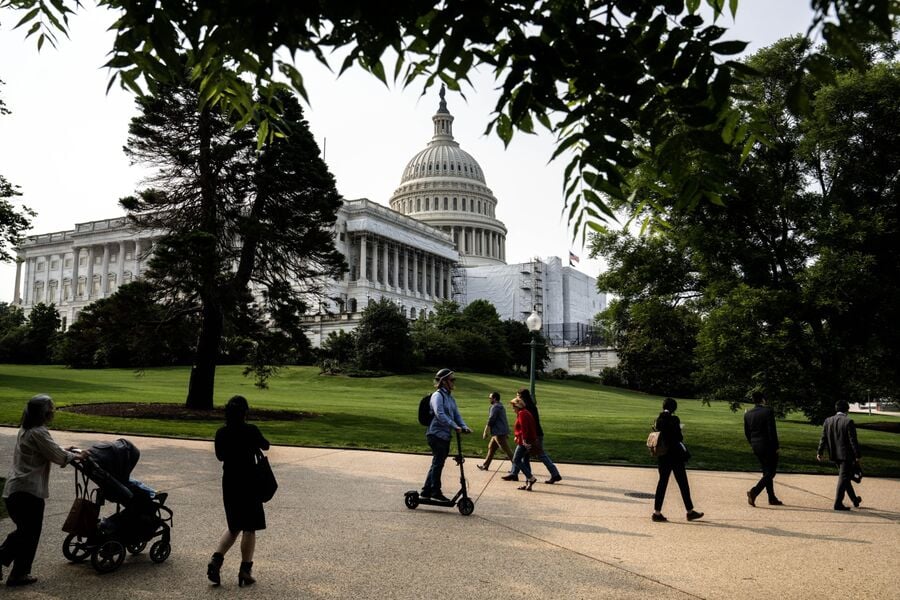

There’s a roughly one-in-four chance that the United States will hit the so-called X-date — at which the U.S. government runs out of cash — without a deal to raise the debt limit, and the odds are getting worse, according to JPMorgan Chase & Co.
“We still think the most likely outcome is a deal signed into law before the X-date, though we see the odds of passing that date without an increase in the ceiling at around 25% and rising,” JPMorgan chief U.S. economist Michael Feroli said Wednesday in a note to clients.
“In this latter scenario, we think there is a very high likelihood Treasury would prioritize principal and interest payments,” he wrote. “While doing so would avoid a technical default, there would still be several adverse effects, including a likely downgrade of the U.S. credit rating.”
A potential deal including cuts to federal government spending could reduce U.S. gross domestic product by 0.1% to 0.5% in 2024, depending on the details, JPMorgan's Feroli said.
According to a popular economic model for monetary policy known as the Taylor rule, that would suggest the Federal Reserve needs to make one fewer quarter-point interest-rate hike in order to bring inflation down, he said.

Relationships are key to our business but advisors are often slow to engage in specific activities designed to foster them.

Whichever path you go down, act now while you're still in control.

Pro-bitcoin professionals, however, say the cryptocurrency has ushered in change.

“LPL has evolved significantly over the last decade and still wants to scale up,” says one industry executive.

Survey findings from the Nationwide Retirement Institute offers pearls of planning wisdom from 60- to 65-year-olds, as well as insights into concerns.
Streamline your outreach with Aidentified's AI-driven solutions
This season’s market volatility: Positioning for rate relief, income growth and the AI rebound
